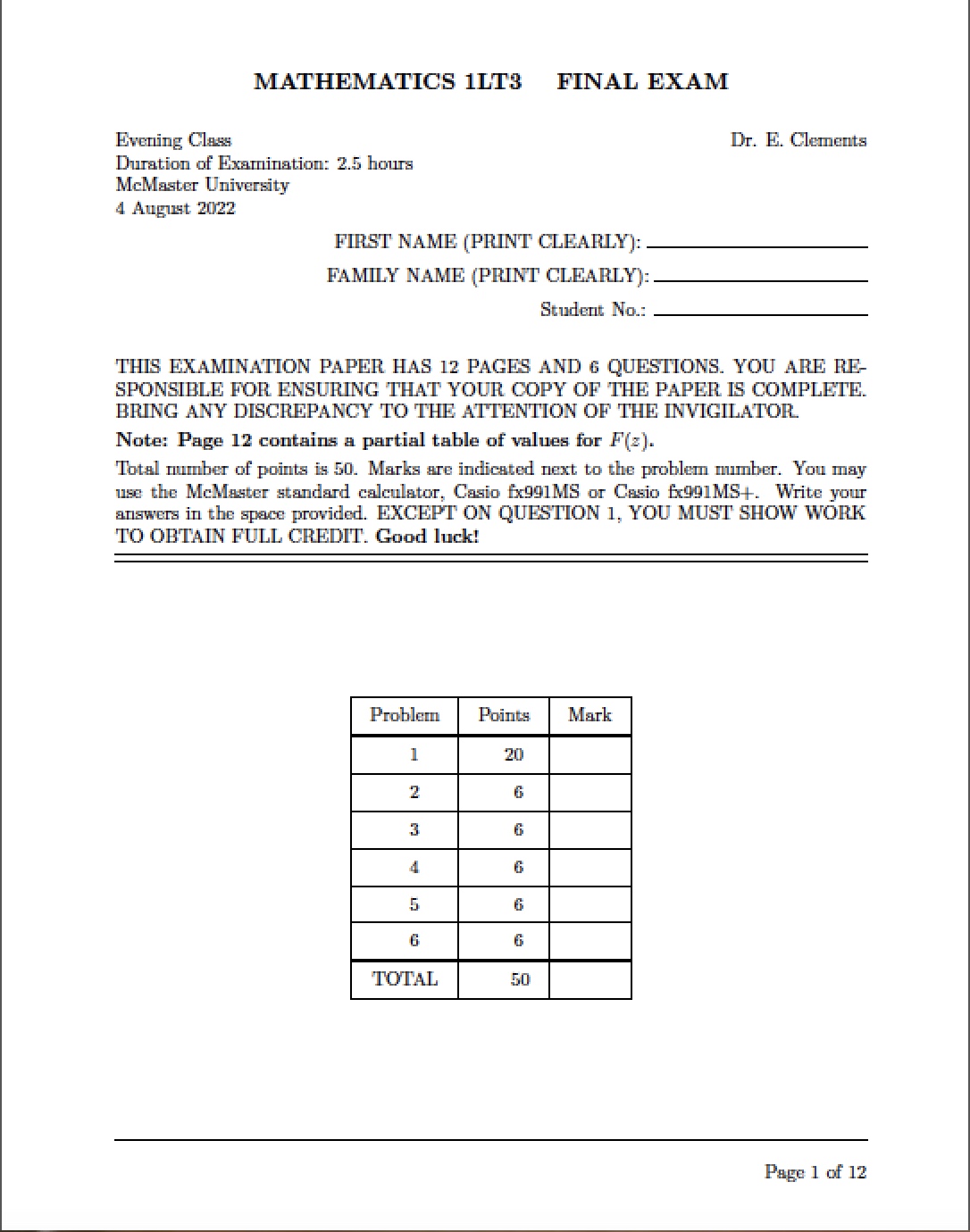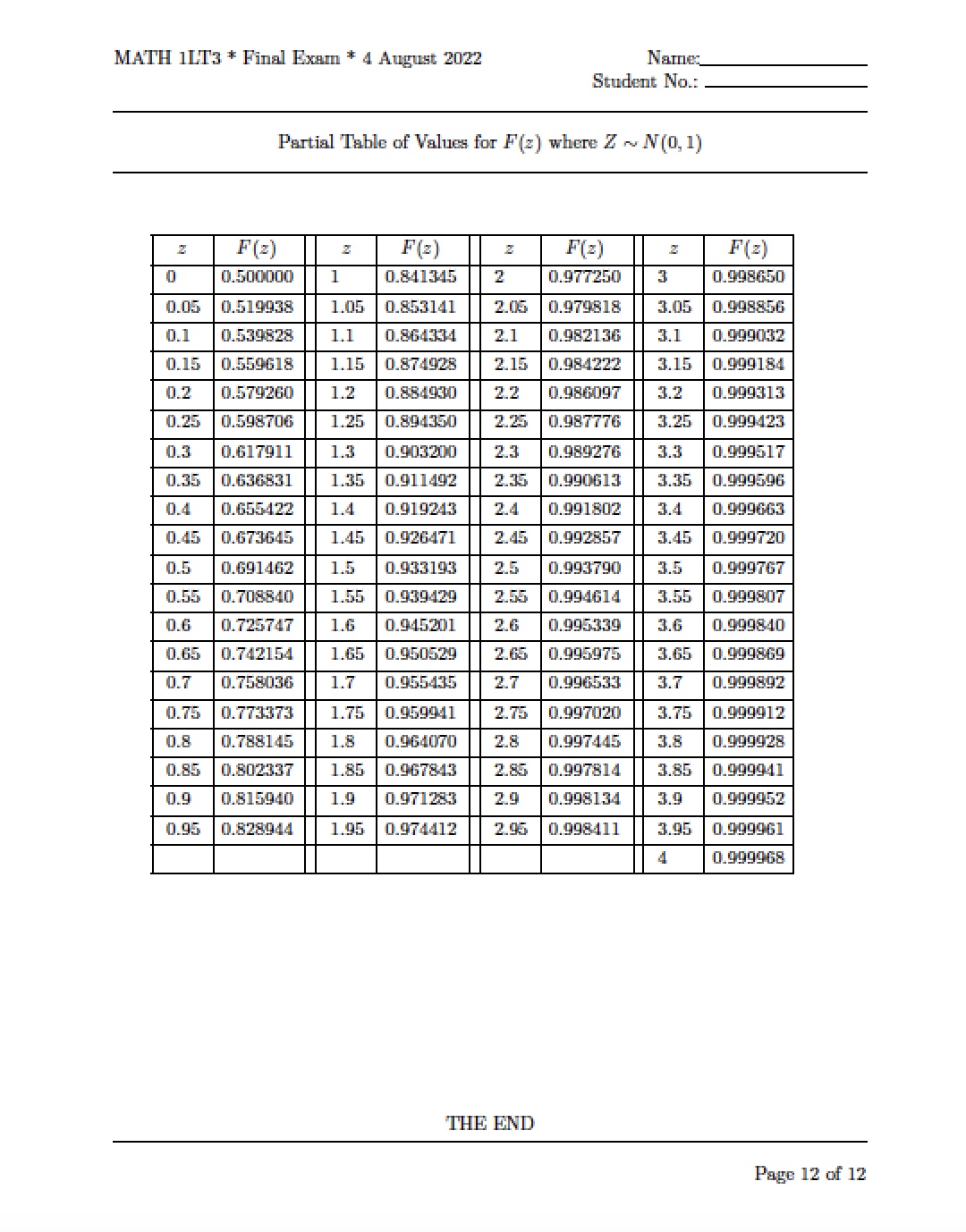CHECKLIST
HARDCOVER TEXTBOOK:
(1) What are autonomous DEs? Pure-time DEs? How do we check that a function is a solution of a given initial value problem? Do you know how to set up Euler's method for a single equation, and for a system of equations, such as the predator-prey equations?
(2) Did you review integration from chapter 7 (including integration using substitution and integration by parts)? What is a relative rate of change (per capita rate)? What is the solution of the basic exponential model P'=kP, with P(0)=P_0? Did you study logistic and modified logistic equations? What is the biological meaning of the parameters in these equations? Did you study the basic model for the spread of a disease?
(3) How do we find equilibria of autonomous DEs? Can you draw and interpret phase-line diagrams? Can you determine stability of equilibria using a phase-line diagram and/or the Stability Theorem? Did you practice solving separable DEs?
(4) Did you study systems of DEs, such as the predator-prey model? Can you draw a phase-plane diagram including nullclines, direction arrows, and a phase-plane trajectory? Can you identify the equilibria of a system of two DEs?
SEVERAL VARIABLES:
(4) Did you study domain and range questions from Section 1? Can you recognize the graph of a function f(x,y) from its equation? Can you create a contour map for a function? Can you state Definition 7 (limit) in words? How do we show that a limit does not exist? How do we prove that a function is continuous at a point (a,b)? Which functions of two variables are continuous?
(5) Can you write the definition of a partial derivative? Do you know how to calculate and interpret partial derivatives? Second order partial derivatives? Can you determine the sign of a partial (or second order partial) derivative of a function from its graph, table of values, or contour map? Did you memorize the formula for the linearization of a function f(x,y) at (a,b)? What is the relation between partial derivatives and differentiability (Theorem 6 on page 58)? How can you prove that a function is differentiable at a point (a,b)?
(6) How do we compute and interpret a directional derivative? What are the largest and the smallest values of the directional derivative (Theorem 15, page 104)? Do you know the properties of the gradient, as listed in Theorem 16 (page 106)?
(7) What is a critical point? Did you practice finding critical points (i.e., solving systems of two equations)? What is the definition of a local maximum? A local minimum? What is a saddle point? Did you practice applying the second derivatives test (you need to remember the formula for D in Theorem 19, page 119)? Can you show a function has an extreme value or saddle point using an alternative argument?
PROBABILITY AND STATISTICS:
(8) What is a sample space? Simple event? Probability? Do you know formulas in Theorems 2, 3 (pages 28, 29)? How do we define conditional probability? Independence? What is the difference between independent events and mutually exclusive events?
(9) What does the Law of Total Probability say? Did you memorize Bayes' formula? Do you know the definition of independent events? What is a random variable? Probability mass function? Cumulative distribution function? How do you compute the mean, variance, standard deviation of a discrete RV? Are you familiar with Theorem 7 (page 78) and Theorem 8 (page 94)?
(10) What is a Bernuolli trial/random variable? A binomial random variable? How do we define the binomial distribution, i.e., what does b(k,n;p) mean? Did you memorize the formula in Theorem 11 on page 117? What are the mean and the variance of a binomial distribution? Are you able to recognize when a random variable has a binomial distribution?
(11) What is a continuous random variable? What is a probability density function, and what are its properties (definition 36 on page 148)? How do we find the cumulative distribution function, F(x) of a continuous random variable X (definition 37, page 152)? What are the properties of F(x) (Theorem 13, page 155)? How do we find the mean and the variance of a continuous RV (definition 38 on pages 158-159)?
(12) Do you know the formula for the probability density function of a normal RV (definition 39, page 16)? Can you graph the normal distribution illustrating the properties in Theorem 14? What is the standard normal distribution? How do we use it to compute probabilities? What is the 68-95-99.7 rule? How do we compute F(-z)? [Note: You may want to review improper integral and L'Hopital's Rule from your 1LS3 textbook to help with questions in sections 13 and 14.] |

